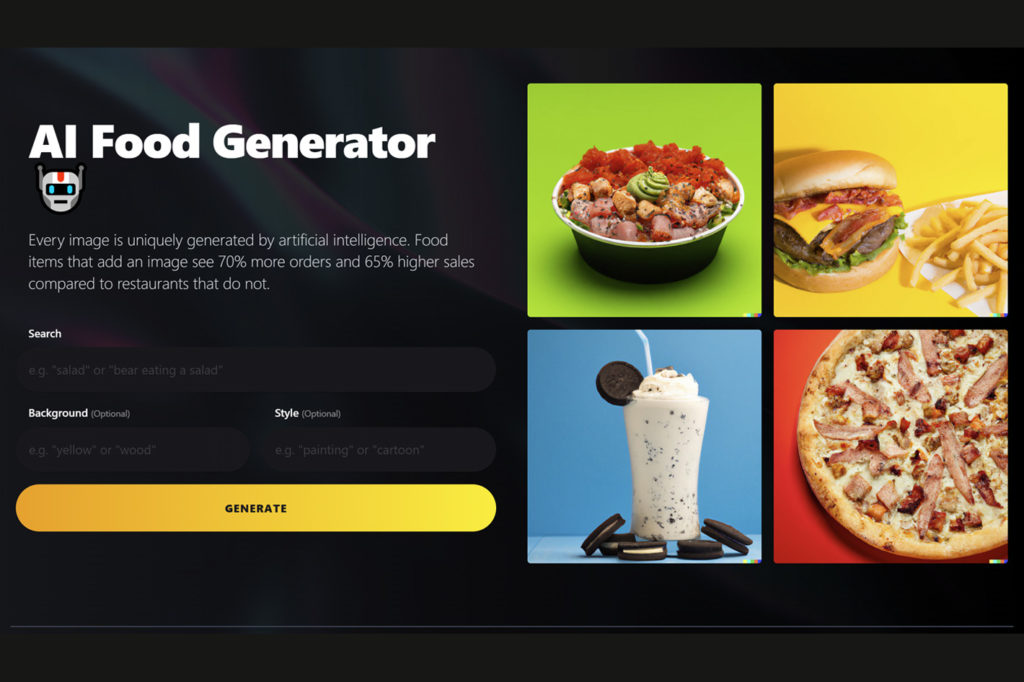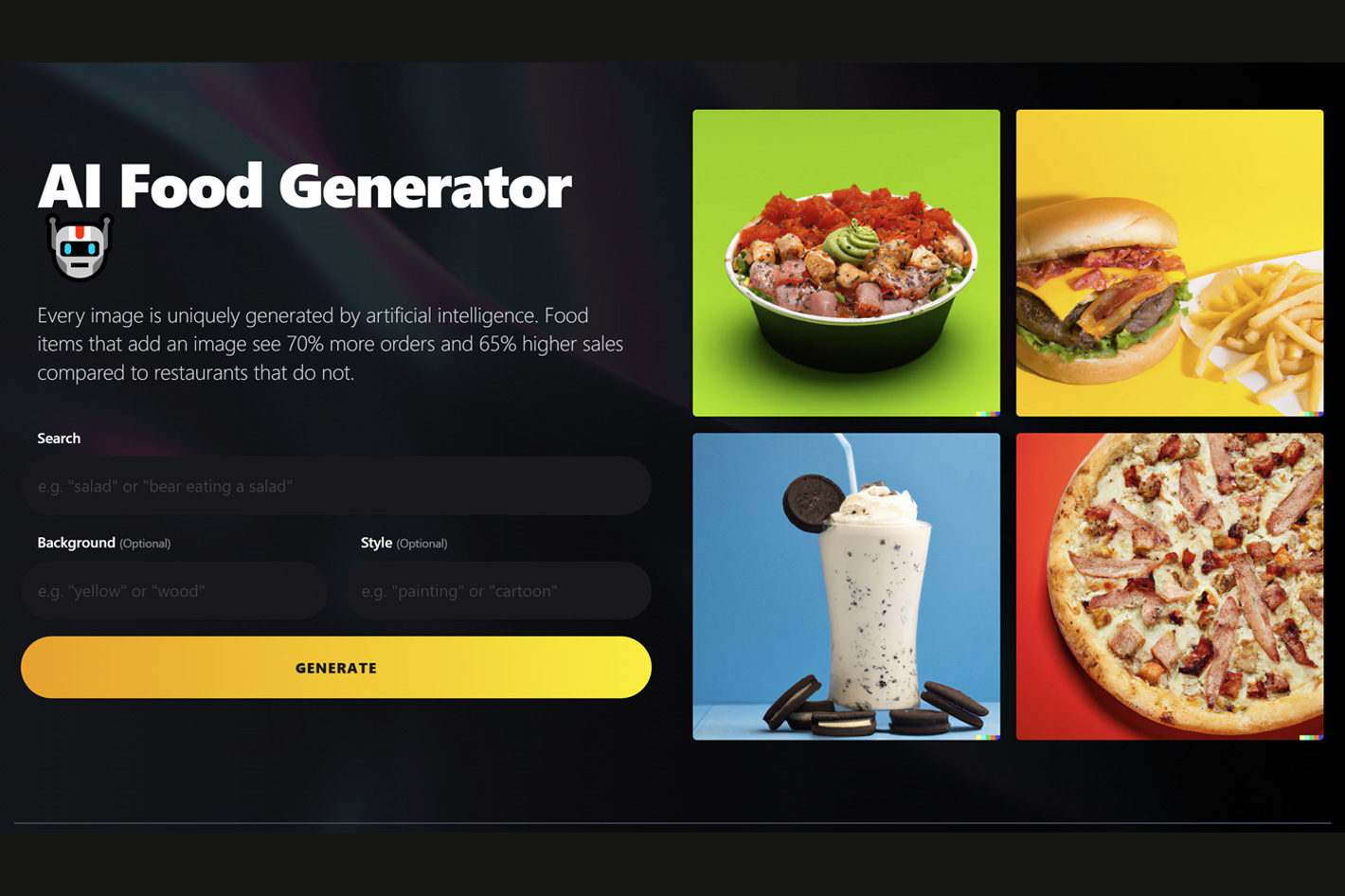 Professional photographers who regularly photograph food dishes may soon not be able to work for some clients, as a new AI app, free to use, creates any type of dish you want in a matter of minutes.
Professional photographers who regularly photograph food dishes may soon not be able to work for some clients, as a new AI app, free to use, creates any type of dish you want in a matter of minutes.
Although people will continue to photograph the food they eat at restaurants to share the photos with friends, professionals doing the same photography for profit may be at the end of their career, at least in some cases, and the culprit has a name: Artificial Intelligence. Yes, we may be talking about the implication of AI in various industries, but no one imagined that AI would sit at the table with us…
AI Food Generator is born out of necessity. Lunchbox, a company that offers a variety of services related to online ordering knew of the importance of photography to attract clients to menu lists in restaurants, but was also aware of the problem that is to create the photography for those listings. So, they decided to use AI to create the photograph, as a service offered to their potential clients.
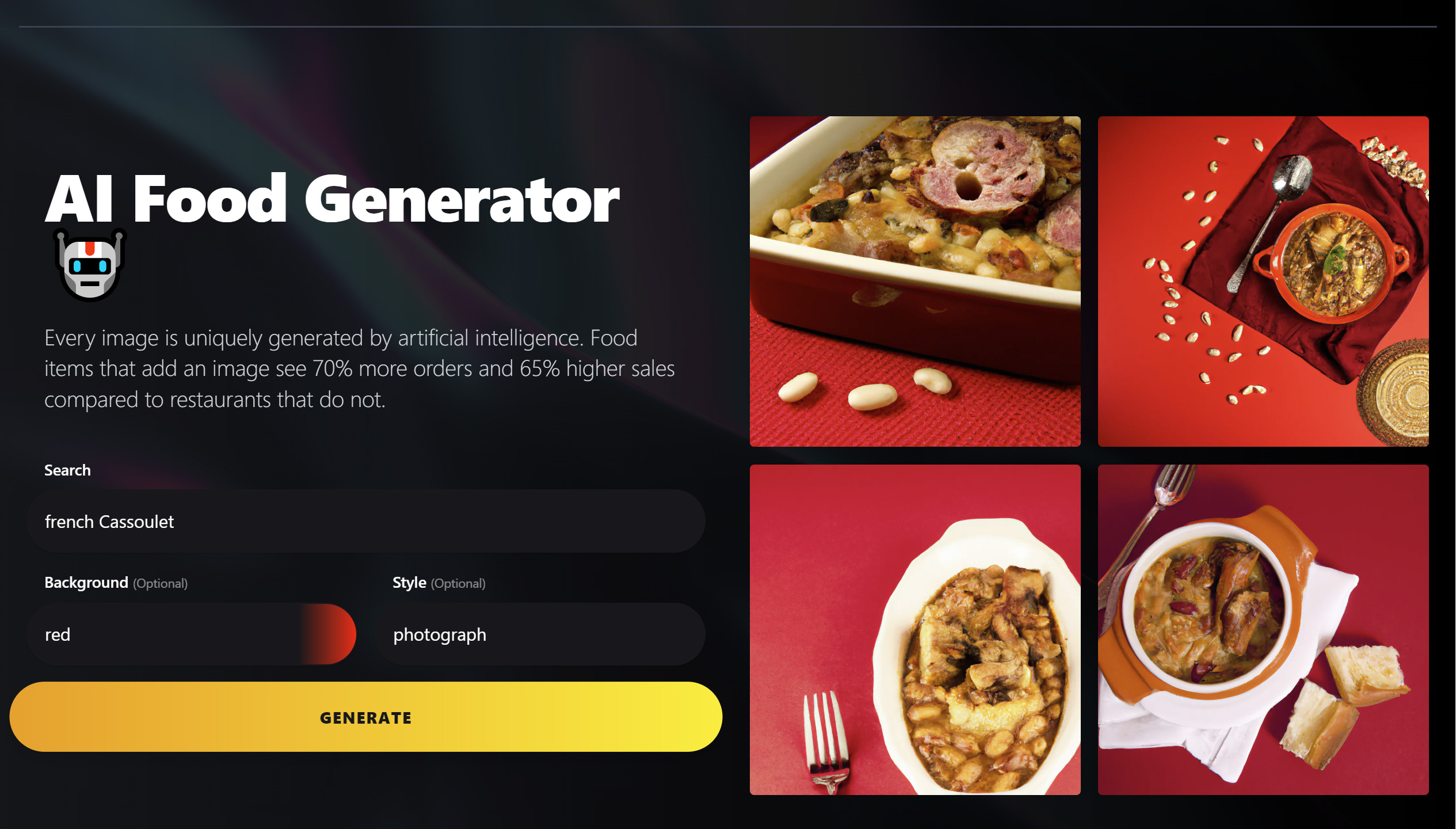 It’s like a Star Trek food replicator
It’s like a Star Trek food replicator
AI Food Generator works like many other AI apps now available online, some which can write – nonsense – texts – that at first glance will fool many, to tools generating “artistic” interpretations of photographs and paintings that are creating havoc in the world of copyright law. Here is, now, some more “food for thought” and I mean it literally: this new app creates dishes, just like Star Trek’s food replicators.
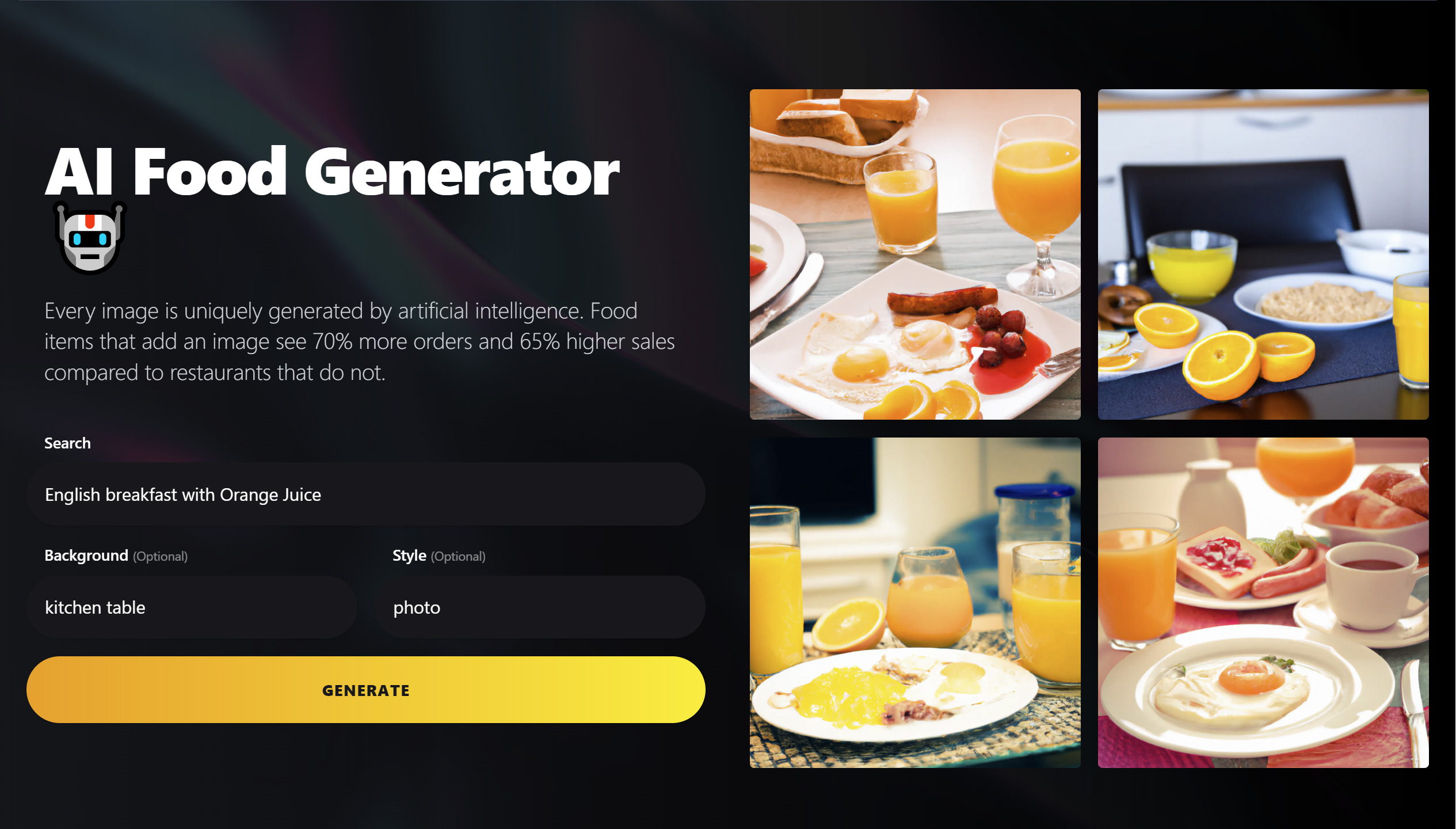 Just to test the AI of this Food Generator, and because we’re in an area – AI – where everything seems possible, I asked the app to create a Klingon Breakfast, followed by a Vulcan Breakfast, and while I can not assure its results would be accepted by Gene Roddenberry (the creator of the series), the app did reply, in a matter of seconds, with suggestions that are compatible with what any Star Trek food replicator would deliver. If you’re worried about how “real” this can be, let me tell you: these photographs look more real than any of the menu options in ST’s replicators, and… you’re right, none of them are eatable.
Just to test the AI of this Food Generator, and because we’re in an area – AI – where everything seems possible, I asked the app to create a Klingon Breakfast, followed by a Vulcan Breakfast, and while I can not assure its results would be accepted by Gene Roddenberry (the creator of the series), the app did reply, in a matter of seconds, with suggestions that are compatible with what any Star Trek food replicator would deliver. If you’re worried about how “real” this can be, let me tell you: these photographs look more real than any of the menu options in ST’s replicators, and… you’re right, none of them are eatable.
In an interview published by QSR, under the title “Introducing the First AI Photo Generator for Restaurants” the minds behind this new tool say it puts an end to the “coming soon” photos on websites, and that means no more waiting for your local photographer to finish editing the images he or she patiently shot in the studio.
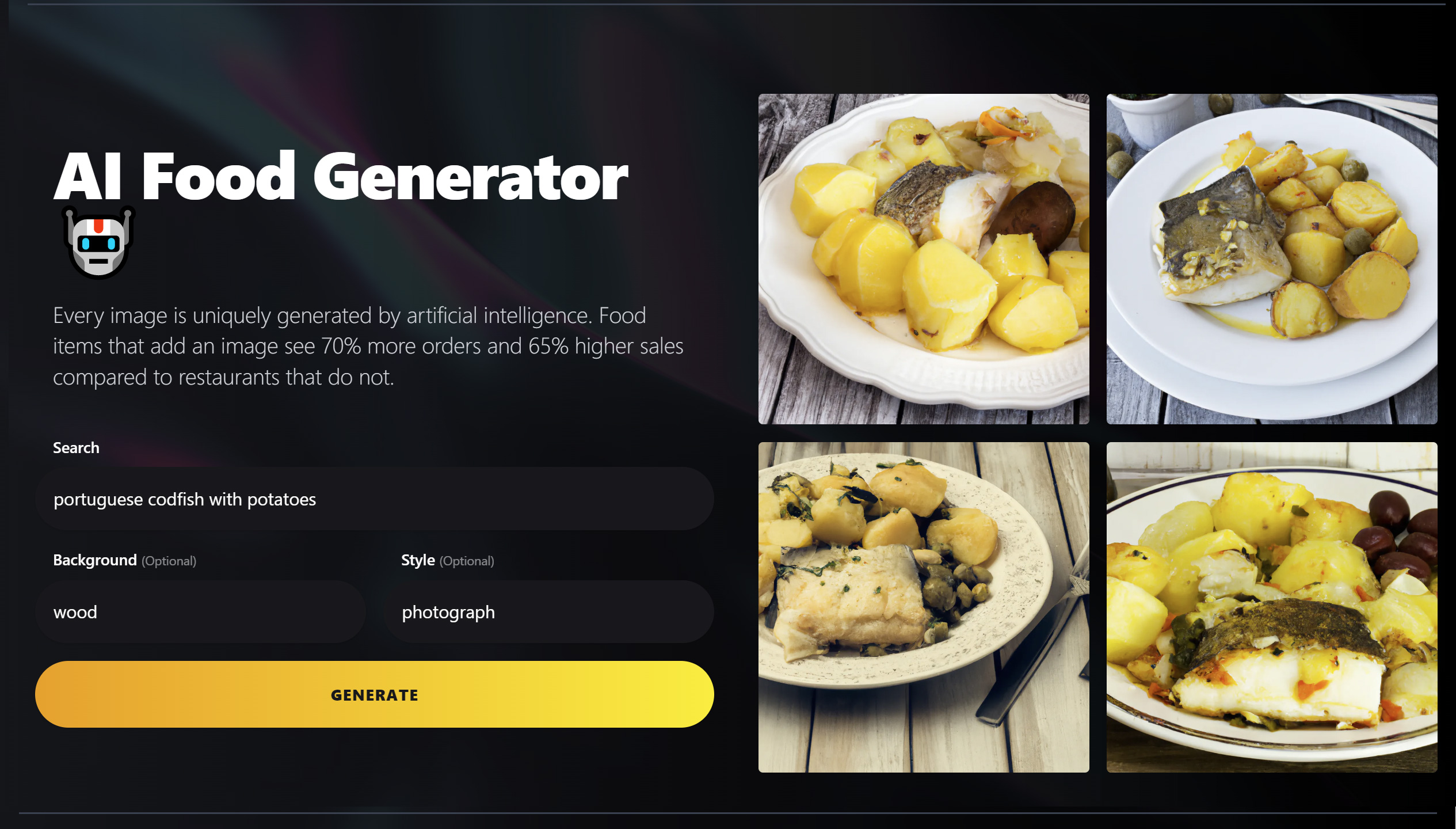
No need to wait for a photographer
Years ago I worked at a big editorial company that had a food magazine and because of the editorial needs they had not only a photographer or two always on hand, but a whole kitchen with a studio where the dishes where photographed as soon as they were done. While for many of those situations the same rules will apply, for many restaurants the AI Food Generator will do the trick: you’ll have your dish suggestions in minutes, and that means you can change menus and photos almost everyday. Because so many of these restaurants and food chains have online ordering systems, this makes it easy to keep the lists updated and vibrant, to attract customers.
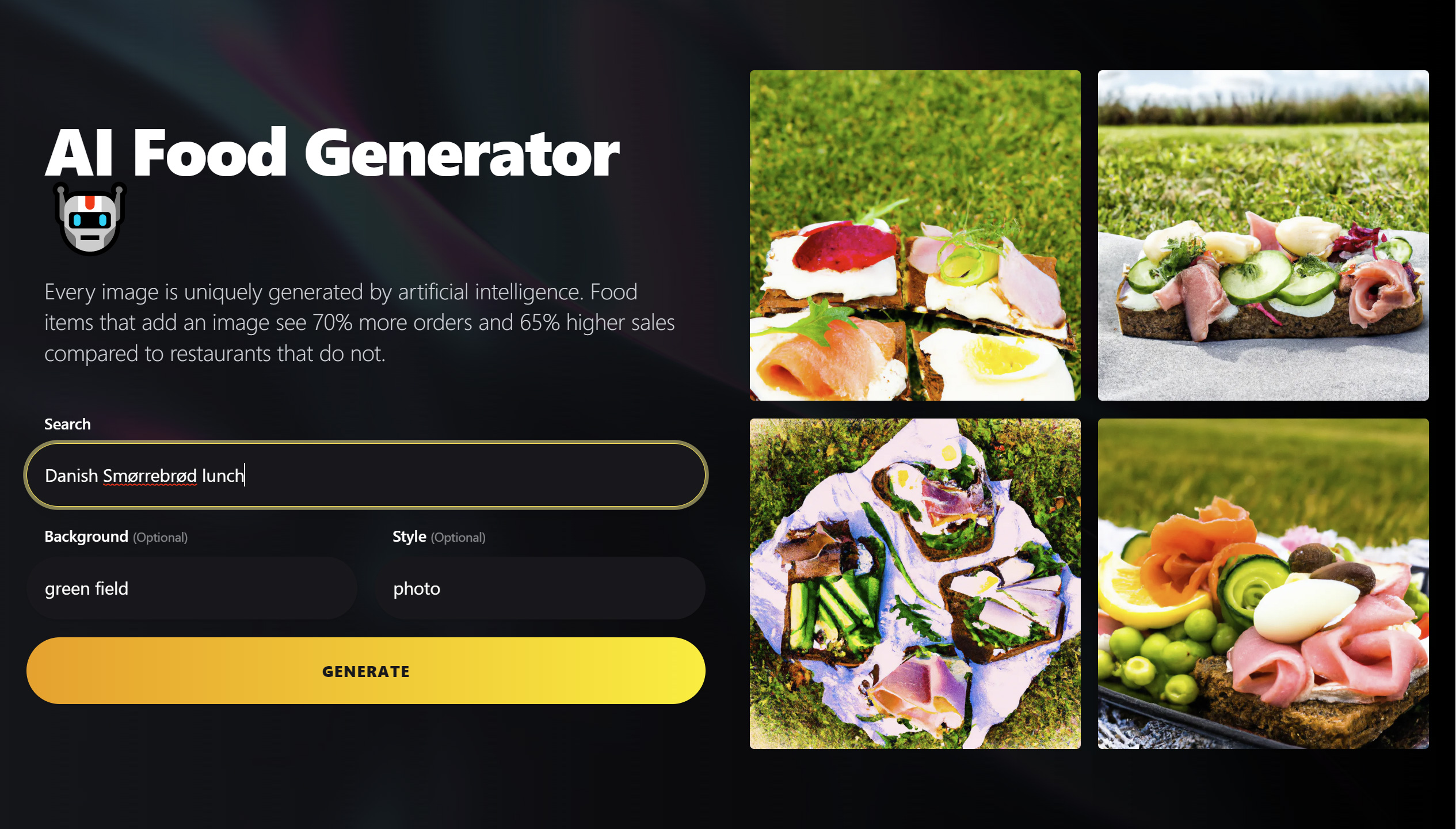 In the QSR interview Nabeel Alamgir, the CEO of Lunchbox, says about the solution that “What I want is for it to be very easy for someone to say, ‘hey, I have a sushi concept. My brand is pink. I want sushi on a pink background, and can I get it really quickly until my photos are taken.’ We wanted to build that for everyone,” he adds, noting that the advantage is easy to see: if a restaurant has something it wants to promote it can do it immediately, as Alamgir explains, “I don’t have to go ahead and wait for a photographer to turn things around. I can test something out very live, very quickly”.
In the QSR interview Nabeel Alamgir, the CEO of Lunchbox, says about the solution that “What I want is for it to be very easy for someone to say, ‘hey, I have a sushi concept. My brand is pink. I want sushi on a pink background, and can I get it really quickly until my photos are taken.’ We wanted to build that for everyone,” he adds, noting that the advantage is easy to see: if a restaurant has something it wants to promote it can do it immediately, as Alamgir explains, “I don’t have to go ahead and wait for a photographer to turn things around. I can test something out very live, very quickly”.
Yes, for some food photography, photographers are out of the equation. Lunchbox made the product public and available to all restaurants and tech partners and AI Food Generator is free of charge. Worried about any problems resulting from the use of the images? Well, Lunchbox states that the pictures are generated in request, so it’s not the result of a Google search or any other image platform selection. Also, Lunchbox’s AI Food Generator learns as it is used and the OpenAI system it’s based on will recognize photos that appeal to users and create similar versions. No photographer can emulate the pace at which AI adapts to the needs of a client, so this AI Food Generator is here to stay.
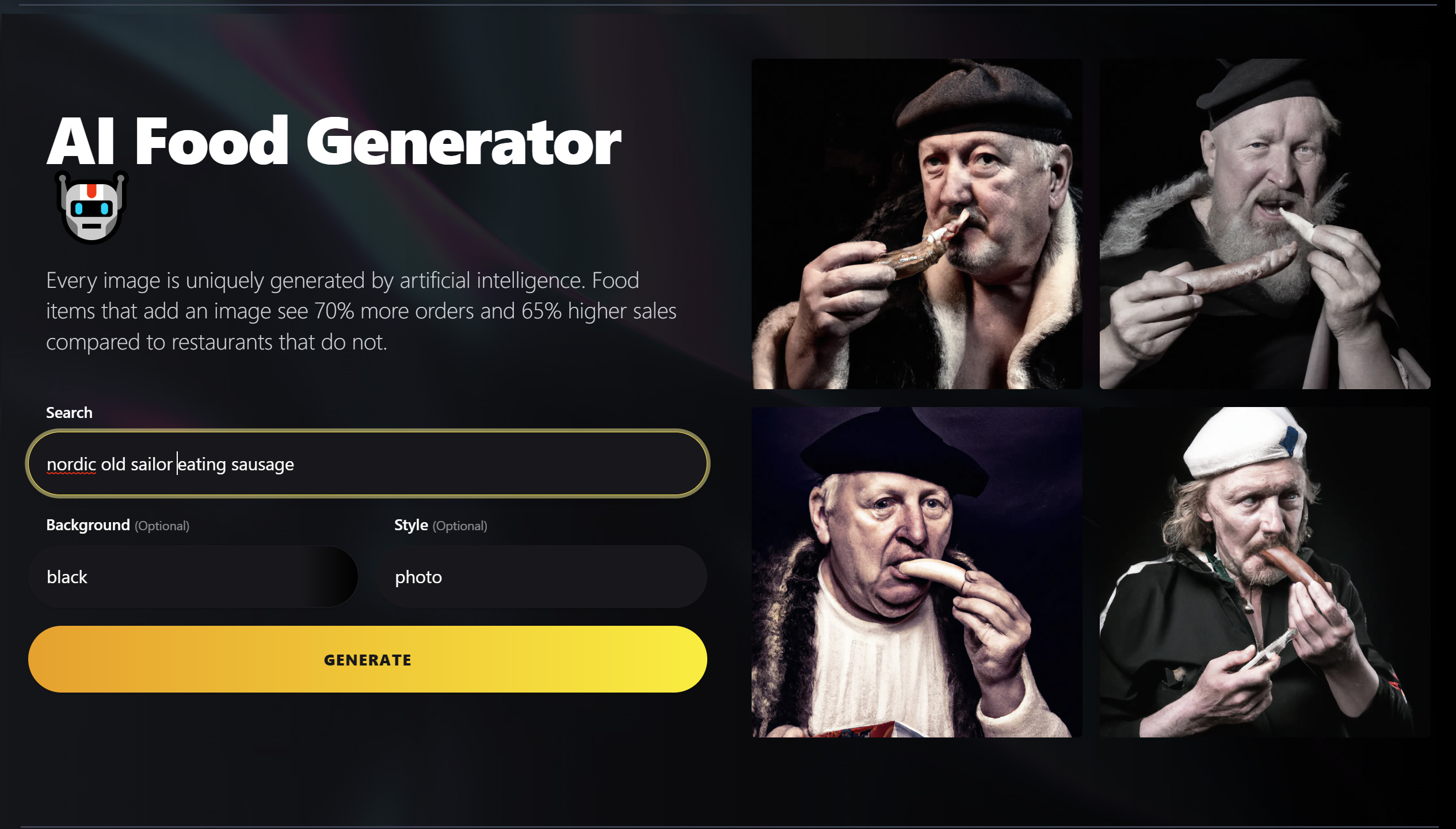 Are those images any good?
Are those images any good?
Every image presented by the tool is uniquely generated by artificial intelligence. According to Lunchbox, food items that add an image see 70% more orders and 65% higher sales compared to restaurants that do not. While you may or may not accept those numbers as real, one thing is clear: images are a key part of any selling solution, and tools that help to create images quickly are on the rise, anywhere you look.
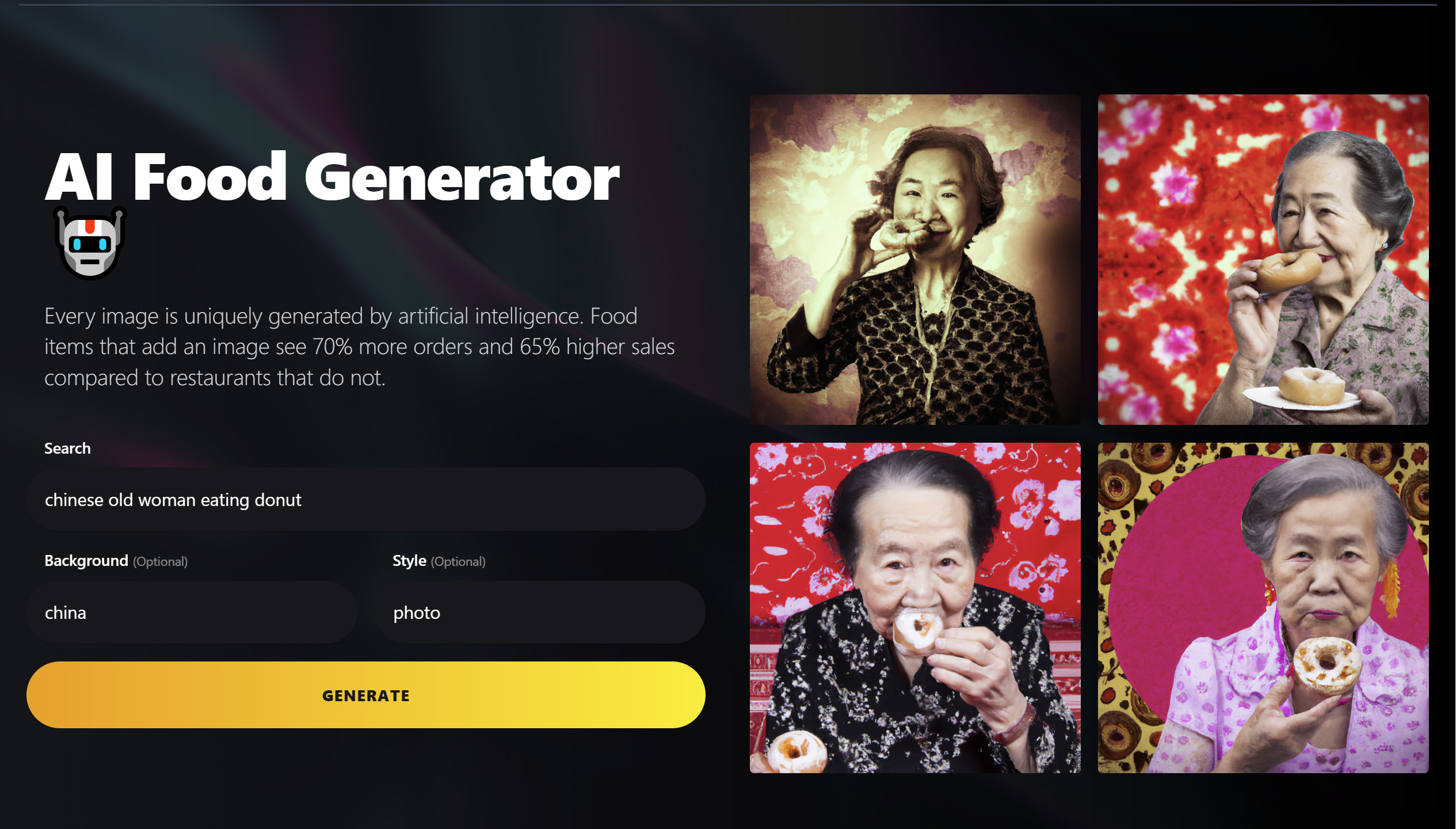 One question remains: are those images any good? The best way to find an answer is to test the solution, and that’s what I did. The interface is simple: you select the dish or type of food, and optionally select a background – anything from a color to a material like wood or stone – and whether the resulting image is a photograph, looks like a painting or has a cartoon style. You can spend hours playing with the options available and, from what I tried, the results are amazing. You get images with a resolution of 1024×1024 pixels that are good enough for online menus.
One question remains: are those images any good? The best way to find an answer is to test the solution, and that’s what I did. The interface is simple: you select the dish or type of food, and optionally select a background – anything from a color to a material like wood or stone – and whether the resulting image is a photograph, looks like a painting or has a cartoon style. You can spend hours playing with the options available and, from what I tried, the results are amazing. You get images with a resolution of 1024×1024 pixels that are good enough for online menus.
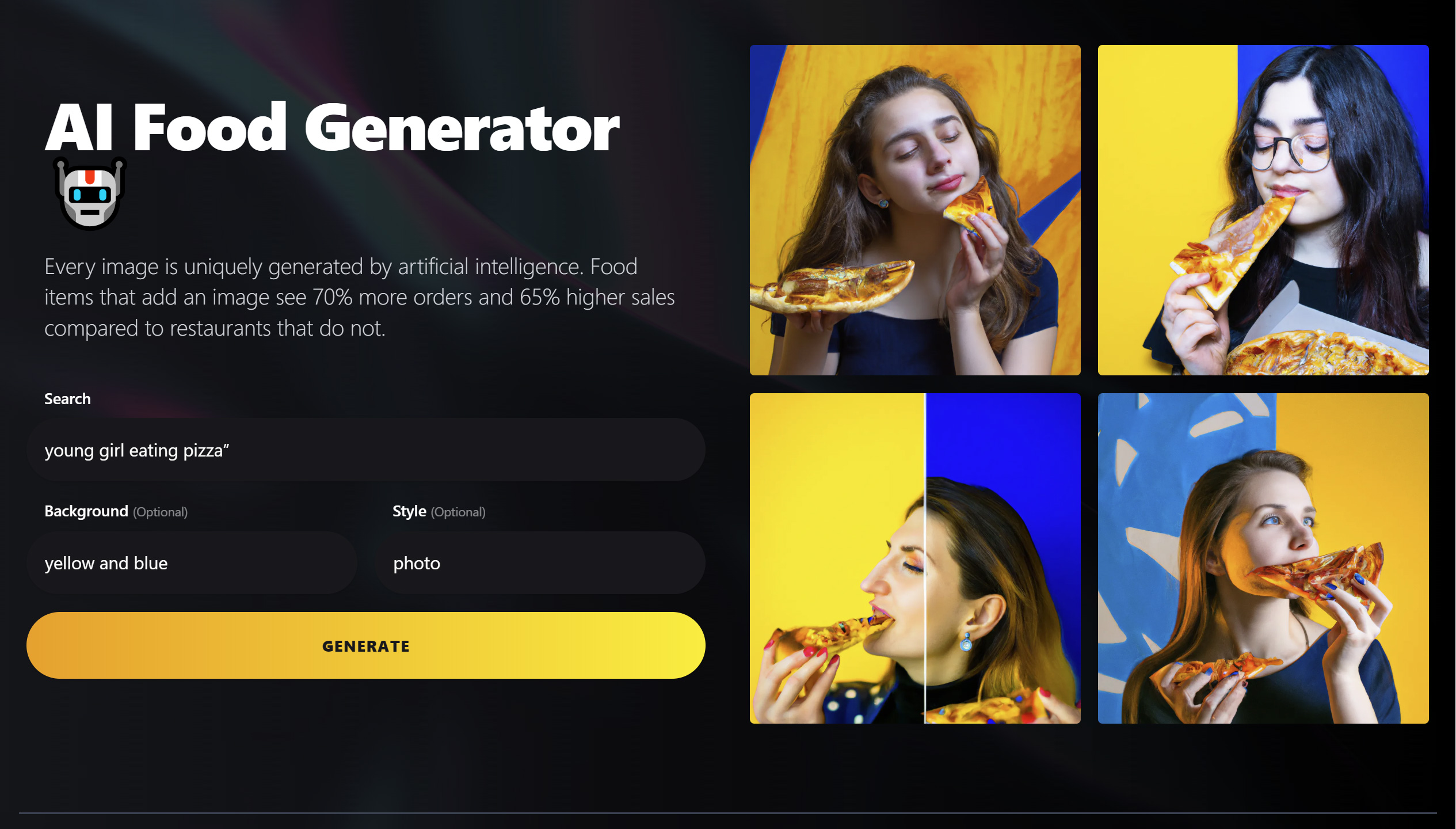
From a French Cassoulet to the traditional Codfish with Potatoes that is a cornerstone in Portuguese menus, from the full English Breakfast (with orange juice) on a table to the Danish Smørrebrød lunch served on the lawn, the AI Food Generator was able to find sets of four images to choose from. And if you’re not happy with the results you can simply click “Generate” again and the system shows you a new set of options.
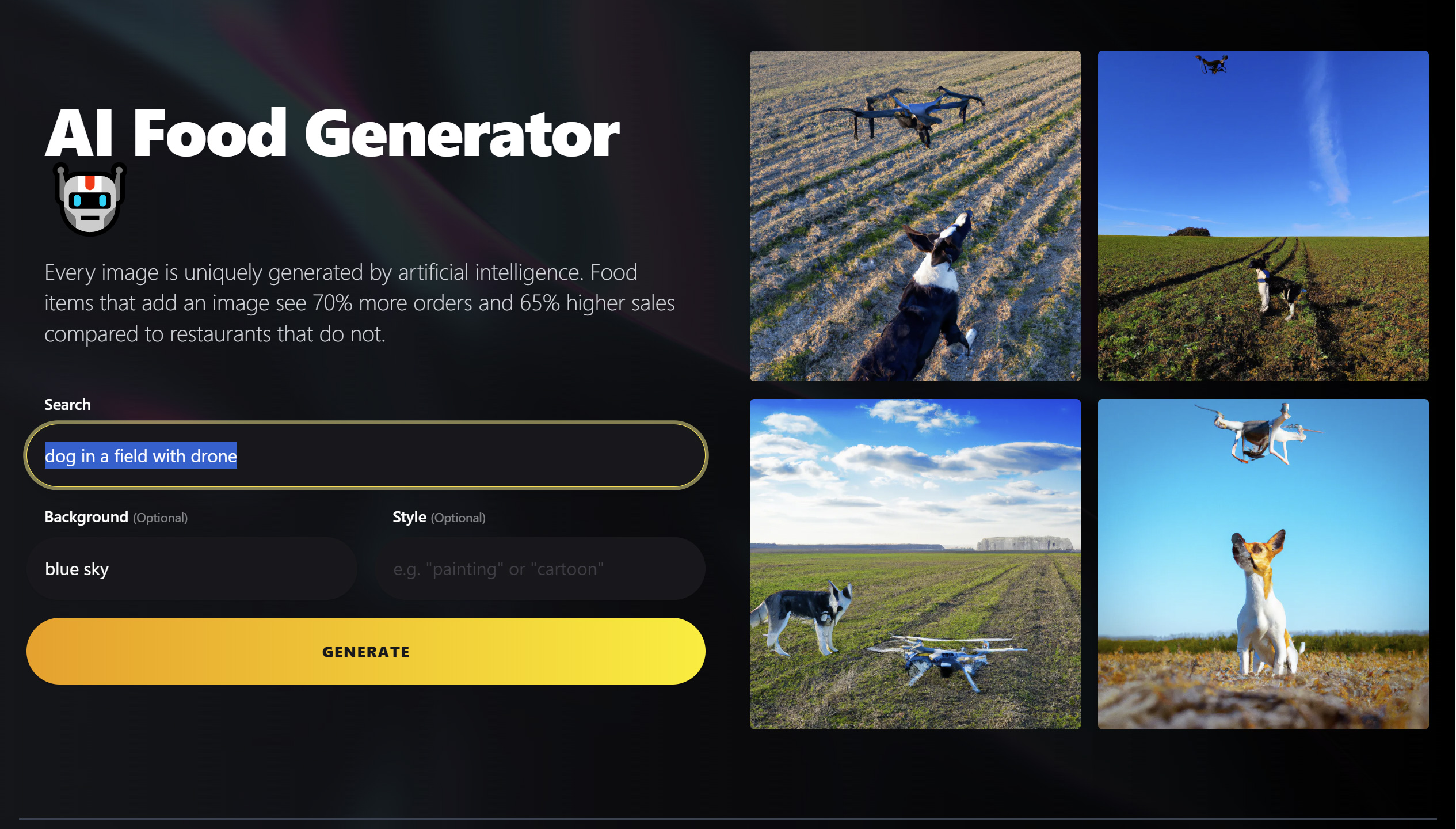 Artificial Intelligence is agnostic
Artificial Intelligence is agnostic
Taking things further, I wondered if I could create images with people in them, so I asked Lunchbox’s AI Food Generator to show me photos of “an old Chinese lady eating a donut with a Chinese looking background”… and yes, it works too. I tried it also with a “Nordic old sailor eating sausage” and the resulting images shows it´s feasible… although we may be stretching too far what AI Food Generator is designed to do. But give it a regular “young girl eating pizza” with a “yellow and blue” background and it delivers something more akin to what it’s built to create.
While this is a tool designed with restaurants in mind, it clearly reveals that AI is agnostic when it comes to usage. I tried “drone with sausage flying over green field” and while the resulting images may not be what I hoped for, I still have photos that may be used for something else. In fact, tools using AI can put out of a job editorial photographers too, as they can create illustrations for different needs.
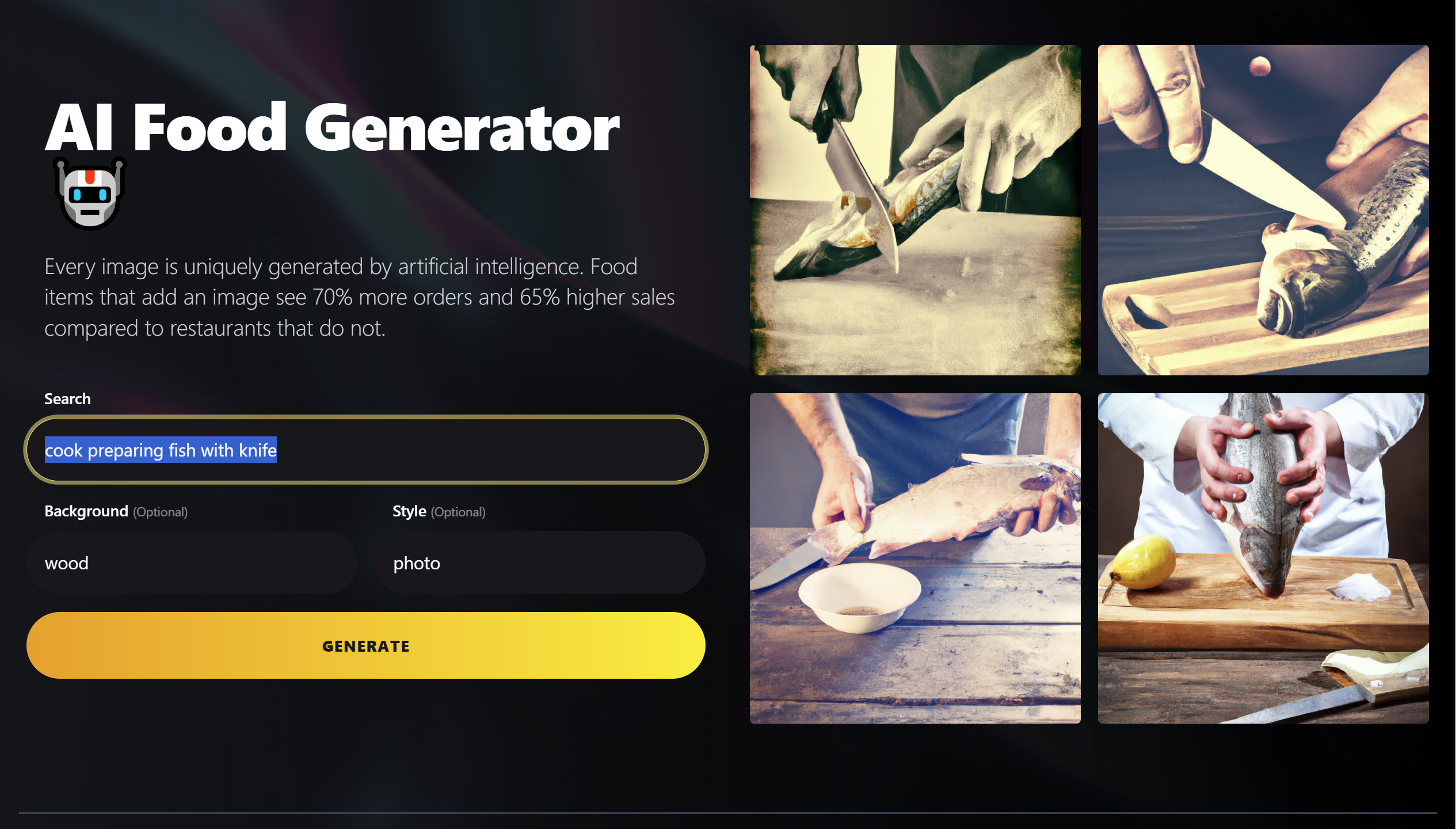 One good example of this: because of editorial content I write, I regularly need images of fish, sometimes fish dishes, and it can be hard to find the adequate image while searching image banks. I tried AI Food Generator with a “cook preparing fish with knife” and got usable results, and then tried a classic “salmon dish with lemon slice” to get results that show why AI is a popular subject these days.
One good example of this: because of editorial content I write, I regularly need images of fish, sometimes fish dishes, and it can be hard to find the adequate image while searching image banks. I tried AI Food Generator with a “cook preparing fish with knife” and got usable results, and then tried a classic “salmon dish with lemon slice” to get results that show why AI is a popular subject these days.
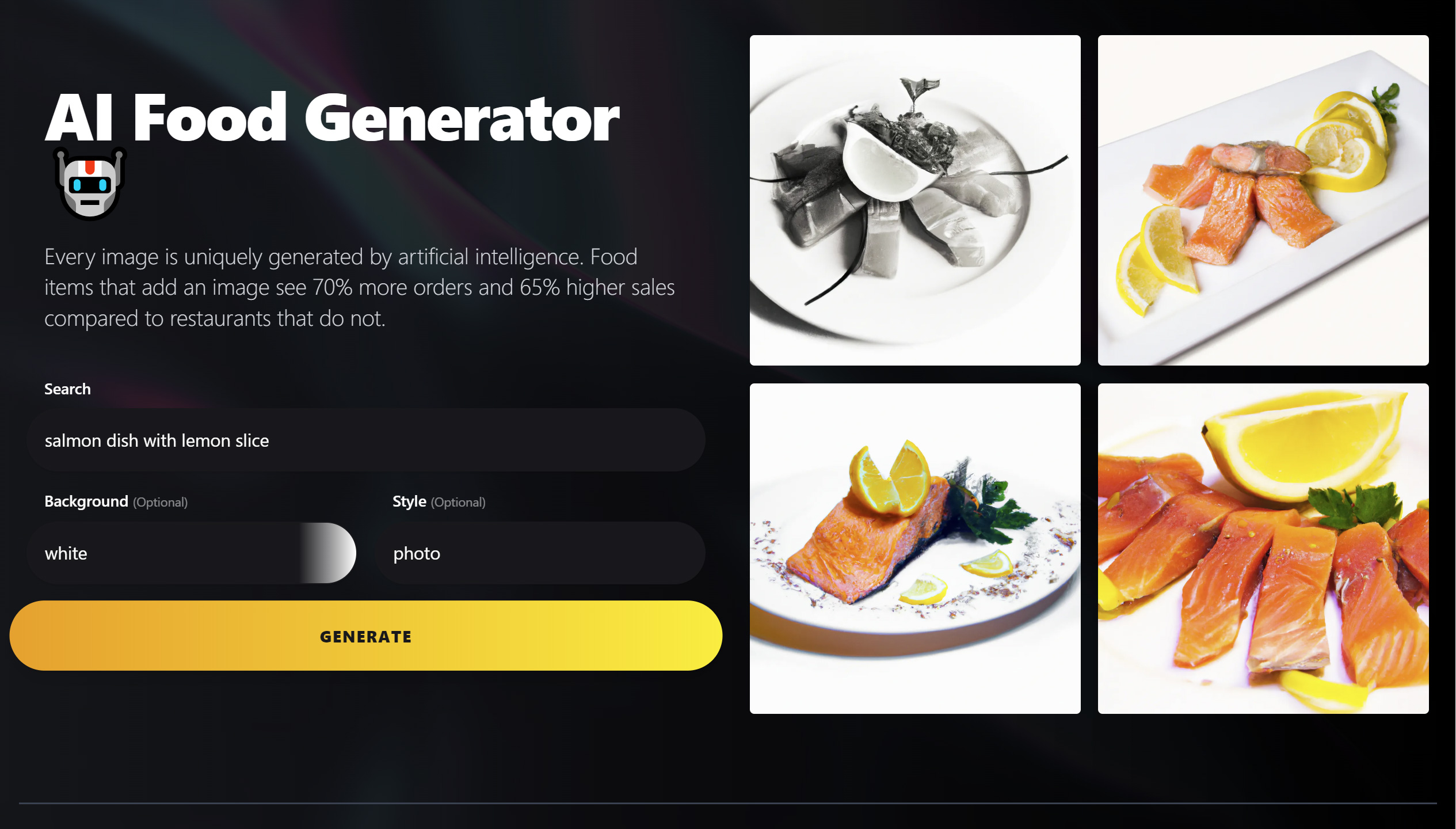
What all this means is that with tools like these even photographers banking on the eventual sales of their image bank photos may be out of a job: if an editor can ask for a “dog in a field” with drone to its AI tool, no photographer will make sales. Yes, I tried it in the AI Food Generator and while the results are far from usable – at least for the dog – the potential is there. The resulting images also show the pitfalls of AI, but it can only evolve, as it gets to “eat” more information.

Filmtools
Filmmakers go-to destination for pre-production, production & post production equipment!
Shop Now